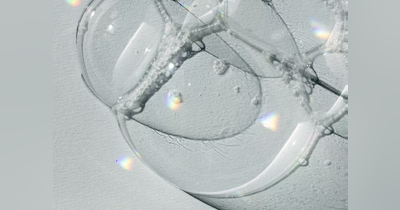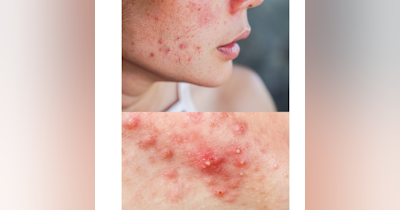This week's podcast guest is Dr. Mark Lees, an icon in the global professional esthetics community who is a reknowned expert in successfully treating acneic skin. While the following article was published several years ago (a tip-off might be Dr. Mark's referral to the bacteria linked to acne p. acnes instead of its new classification c. acne), we thought you might like a deeper dive into the acne scene. You can contact Dr. Lees at info@marklees.com for further information or follow him on Facebook at Mark Lees Skin Care. Lastly, please note the article this post is taken from was written for the esthetician. It was published in ascpskincare.com in March/April 2019, but we think regular folks would enjoy a look behind-the-scenes as well.
How many of your clients have acne-prone skin? Did you know it is one of the top reasons clients seek help from a skin care professional? It is vitally important for estheticians to understand the basics of acne-prone skin conditions to be able to provide the best care for these clients.
1. The first two factors in acne causation are genetic. The tendency to have both acne and clogged pores is hereditary. People who develop acne and acne flares easily have a genetic tendency to retention hyperkeratosis (RH), a condition that causes a build-up of dead cells on the skin surface and within the follicle. Instead of dead cells naturally desquamating from the skin, skin cells “stick” to the epidermal surface, causing a thick surface and “gathering” inside the follicles.
The second genetic factor is oily skin and excessive sebaceous production. People inherit their oiliness level and pore size. The sebum coats the cell build-up in the follicles, causing a “clumping” of sticky dead cells. As more cell build up occurs and more sebum is secreted, this clump develops into a follicular impaction known as a comedo.
2. It is vitally important for both the esthetician and the client to be aware that genetic conditions cannot be changed. The symptoms caused by the genetic factors can be manipulated by treatment and products to clear the skin, but this does not change the hereditary factors. If treatment is discontinued, the genetic factors will cause clogging again, and the condition will reoccur in time. There is no cure for acne, only good clearing management techniques.
3. Oiliness levels are largely governed by androgenic hormones. Hormonal factors are a very important element in acne. While hormonal influences affect acne in both males and females, female clients with acne-prone skin are more likely to be affected by hormonal issues as adults.
Male hormones (androgens) in the bloodstream trigger sebum production. When male hormones in the bloodstream come in contact with the lobes of a sebaceous gland, the hormones “dock” in a receptor site on sebaceous cells lining the gland. This switches on sebaceous production and sebum flows into the follicle and onto the skin surface. There, it mixes with the cell buildup and begins clogging the follicle. The sebum solidifies and forms an impaction known as a 'clogged pore'.
4. There are a number of different bacteria that naturally live in the skin follicle. One of these is Propionibacterium acnes (P. acnes). P. acnes bacteria are anaerobic, which means they cannot survive in the presence of oxygen. The bacteria continually divide to produce new bacteria, but P. acnes bacteria are constantly being killed off by oxygen flowing in and out of the follicle. When the follicle becomes blocked because of an impaction of dead cell buildup and solidified sebum, the follicle does not aerate as it normally does. This allows the P. acnes bacteria to increase in numbers.
P. acnes bacteria only eat one food: sebum. As they digest the sebum, fatty acids are produced from the sebaceous remains, and these acids cause inflammation in the follicle, which causes irritation of the follicle walls. This inflammation further impedes the follicle aeration, which perpetuates the situation.
5. There are two types of comedones. Non-inflammatory comedones are either open comedones (typical blackheads) or closed comedones, which appear as small white bumps just under the skin surface. Open comedones are so-called because the follicle opening (ostium) is open. Closed comedones do have an ostium as well, but the opening is extremely small compared to an open comedo. This tiny opening, along with the follicle stuffed with cell buildup and solidified sebum, further blocks the follicle's aeration. When the follicle becomes more and more filled with the impacted buildup of sebum and pressure from inflammatory fatty acids, the follicle wall ruptures. The immune system then sends white blood cells to the ruptured follicle and blood floods the follicle so the white blood cells can attack the bacteria and “save” the follicle. The lesion becomes red from the presence of blood and inflammation, causing the appearance of an acne papule.
6. Any sort of inflammation can contribute to acne flares if a person is prone to acne. Overly-stimulating treatments, peeling agents that are too strong or used too frequently, excessive extraction, fragrances in products, or stimulating products or treatments can cause inflammation in the follicles. When the follicles are inflamed, the follicle walls swell, obstructing follicle aeration that keeps acne bacteria in check. This can cause sudden flares of papules. Known as an acnegenic reaction or flare, these papules are often seen when new home care products are introduced. This may indicate that the product is too rich, too stimulating, or generally inflammatory to sensitive skin.








